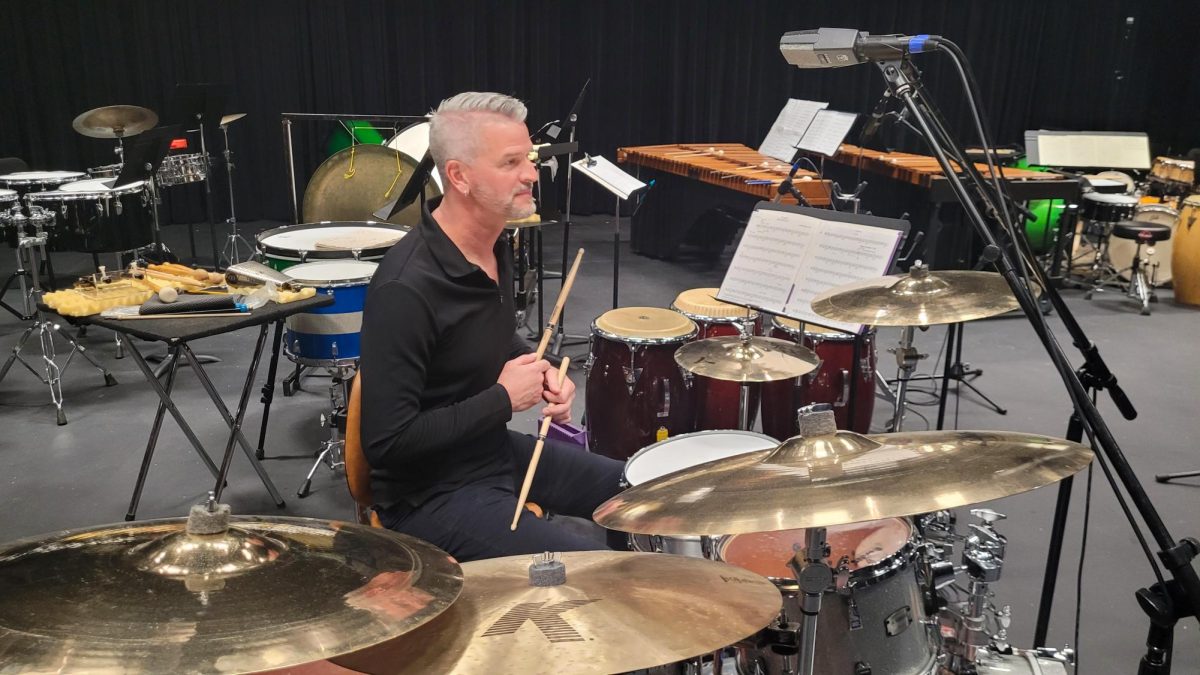In October of last year I wrote a column about the pumpkin eating habits of nature’s very own daredevil: the branch bouncing, tail-twitching tumbler known as the common squirrel.
In that piece, I conjectured that these bushy tailed bandits eat themselves into a stupor by consuming too much pumpkin, and as a result take unnecessary risks.
There is an almanac.com article about ancient folklore predicting the severity of the coming winter, and it contains some interesting superstitions surrounding the quirky habits of squirrels this time of year.
One squirrely superstition predicting a difficult winter is whether squirrels’ tails are bushier than normal, which to me sounds like a genuine old wives’ tale.
A tale about tails is ambiguous and therefore cannot be trusted. Further, are we to believe that there is no scientific instrument more finely tuned for calculating the bushiness of a squirrel’s tail than the eyesight of an old wife? Please, give me a break.
Another squirrel phenomenon for predicting the intensity of the coming winter is their nesting habits, and according to the article: “nests higher in trees suggest a colder, snowier winter; nests located lower in trees suggest a milder winter.”
This bit of folklore reminds us that we have a lot to learn about the natural world that we simply cannot experience through our smartphone screens.
I argue that we need to be spending less time looking at our phones while walking outdoors and more time paying attention to our surroundings, including gazing up into trees and casually assessing the quantity and location of squirrel nests.
One final piece of whiskery woodland wisdom is a rhyme passed down from the ages: “squirrels gathering nuts in a flurry, will cause snow to gather in a hurry.”
I believe that in modern times we cannot predict the snowfall of the coming winter by how actively these acorn acrobats are hoarding food. Rather, our human counterparts are the true indicator.
Indeed, the creation of contemporary folklore can be seen in real time on social media platforms like TikTok, where there are plenty of outdoorsy folks publishing instructional videos on how to prepare acorns for human consumption.
Humans eating acorns is poetry. Never mind that anyone with the time to create TikToks can just go to the store and buy actual food.
Why bother shopping for groceries when one can fetch out their ring light, tripod, and microphone, then spend vast hours editing video ultimately to take food out of the mouths of squirrels?
Granted, I am guilty of watching acorn cooking videos. I learned that acorns are high in tannins, giving the otherwise nutritional powerhouse an overly bitter flavor. But, after a rigorous tannin leeching process, the acorn is rendered safe to eat, or can be milled into flour for baking.
Better bundle up! Observing an abundance of acorn videos and the effort required to make them edible suggests that nature is preparing for a harsh, resource-scarce winter, which might indicate a severe arctic season is imminent.
Dan Hahn can be reached at dhahn@eiu.edu or 217-581-2812.







![[Thumbnail Edition] Charleston High School sophomore Railyn Cox pitches the ball during Charleston's 8-7 win over Flora High School on Monday, March 31.](https://www.dailyeasternnews.com/wp-content/uploads/2025/04/SBHS_01_O-1-e1743982413843-1200x1023.jpg)
![[Thumbnail Edition] Eastern Illinois softball senior infielder Briana Gonzalez resetting in the batter's box after a pitch at Williams Field during Eastern’s first game against Southeast Missouri State as Eastern split the games as Eastern lost the first game 3-0 and won the second 8-5 on March 28.](https://www.dailyeasternnews.com/wp-content/uploads/2025/04/SBSEMO_11_O-1-e1743993806746-1200x692.jpg)




![[Thumbnail Edition] Junior right-handed Pitcher Lukas Touma catches at the game against Bradley University Tuesday](https://www.dailyeasternnews.com/wp-content/uploads/2025/03/MBSN_14_O-e1743293284377-1200x670.jpg)
![[Thumbnail Edition] Senior Foward Macy McGlone, getsw the ball and gets the point during the first half of the game aginst Western Illinois University,, Eastern Illinois University Lost to Western Illinois University Thursday March 6 20205, 78-75 EIU lost making it the end of their season](https://www.dailyeasternnews.com/wp-content/uploads/2025/03/WBB_OVC_03_O-1-e1743361637111-1200x614.jpg)







































![The Weeklings lead guitarist John Merjave [Left] and guitarist Bob Burger [Right] perform "I Am the Walrus" at The Weeklings Beatles Bash concert in the Dvorak Concert Hall on Saturday.](https://www.dailyeasternnews.com/wp-content/uploads/2025/03/WL_01_O-1200x900.jpg)
![The team listens as its captain Patience Cox [Number 25] lectures to them about what's appropriate to talk about through practice during "The Wolves" on Thursday, March 6, in the Black Box Theatre in the Doudna Fine Arts Center in Charleston, Ill.](https://www.dailyeasternnews.com/wp-content/uploads/2025/03/WolvesPre-12-1200x800.jpg)
















